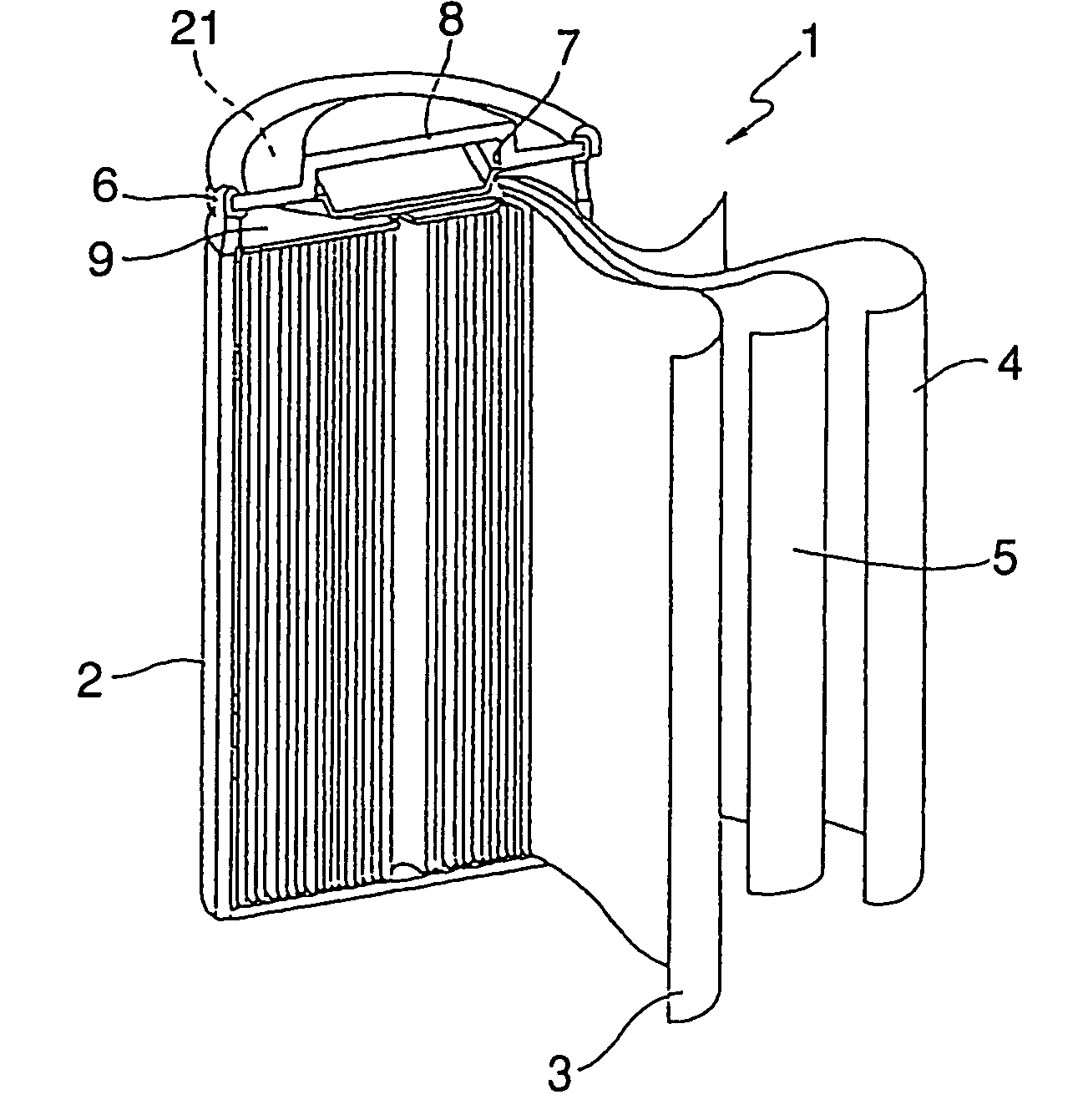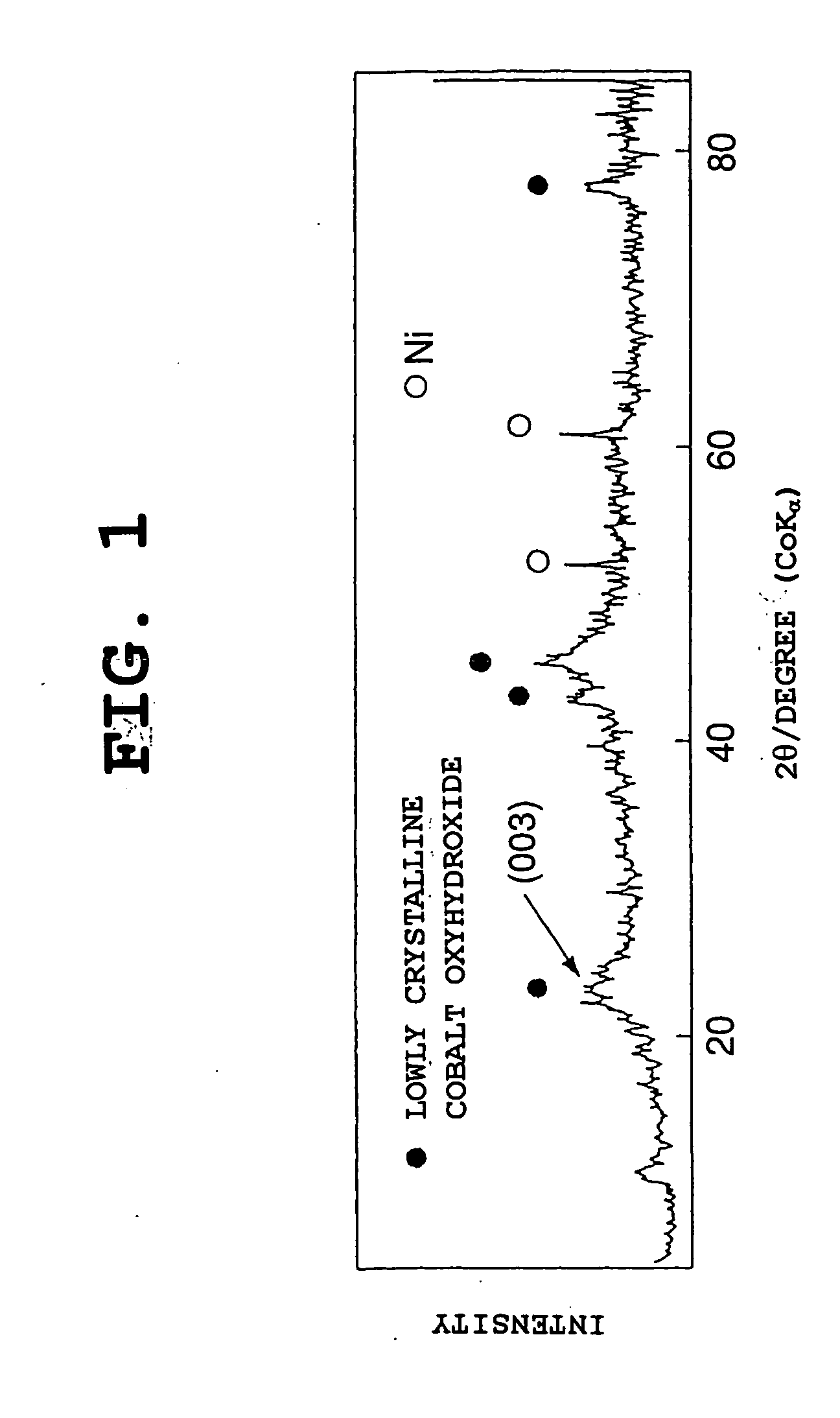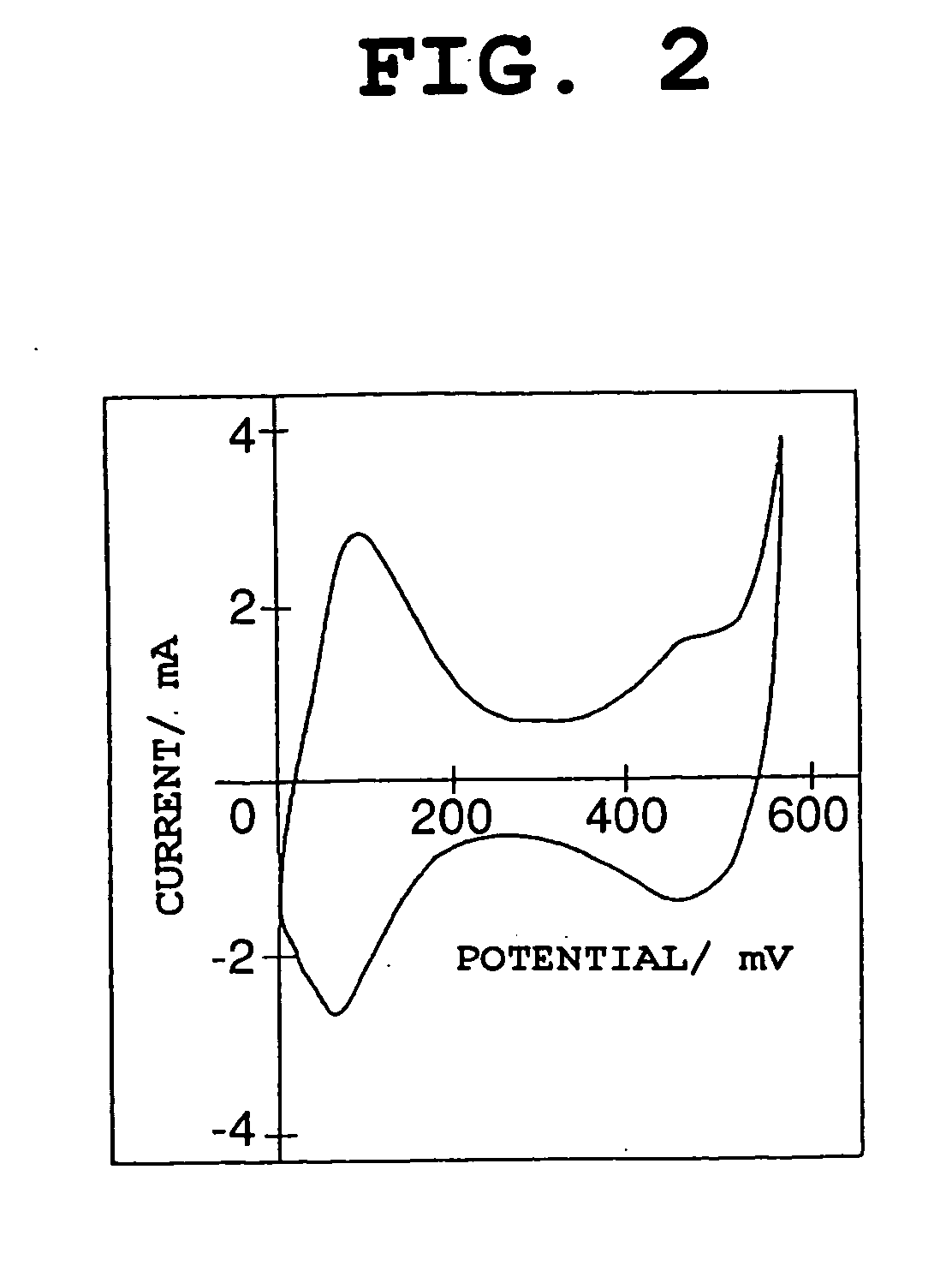Nickel electrode material,and production method therefor, and nickel electrode and alkaline battery
a technology of nickel electrode and alkaline battery, which is applied in the direction of nickel accumulator, secondary cell servicing/maintenance, cell components, etc., can solve the problems of insufficient technique, inability to achieve a size reduction, and deficient battery in electrolytic solution, so as to improve the stability of alkaline electrolytic solution, reduce high-rate discharge characteristics, and increase the resistance of negative electrod
- Summary
- Abstract
- Description
- Claims
- Application Information
AI Technical Summary
Benefits of technology
Problems solved by technology
Method used
Image
Examples
example 1-1
[0139] "Production of Positive Active Material"
[0140] An aqueous solution containing nickel sulfate, zinc sulfate, and cobalt sulfate in combination, an aqueous ammonium sulfate solution, and an aqueous sodium hydroxide solution were added little by little to and mixed with a reaction bath containing ammonium sulfate and sodium hydroxide and regulated so as to have a pH of 12.0.+-.0.2 and a temperature of 45.+-.2.degree., while stirring the reaction bath. Throughout this operation, the pH and temperature of the reaction bath were kept at values within those ranges. Thus, nickel hydroxide particles containing zinc hydroxide and cobalt hydroxide both incorporated therein in a solid solution state, i.e., positive active material particles, were yielded. The proportions-of the nickel, zinc, and cobalt in the positive active material were regulated to 58% by weight, 3.7% by weight, and 1.2% by weight, respectively (in terms of the proportions of the metals).
[0141] "Production of Positive...
examples 1-2 to 1-4
[0148] The same procedure as in Example 1-1 was conducted, except that the temperature in the heat treatment (second step) was changed. Heat treatment temperatures of 100.degree. C., 120.degree. C., and 140.degree. C. were used respectively in Examples 1-2, 1-3, and 1-4. In each of the nickel electrode materials of Examples 1-2 to 1-4, the average oxidation number of nickel and cobalt was 2.15.
PUM
| Property | Measurement | Unit |
|---|---|---|
| tap density | aaaaa | aaaaa |
| specific surface area | aaaaa | aaaaa |
| temperature | aaaaa | aaaaa |
Abstract
Description
Claims
Application Information
 Login to View More
Login to View More - R&D
- Intellectual Property
- Life Sciences
- Materials
- Tech Scout
- Unparalleled Data Quality
- Higher Quality Content
- 60% Fewer Hallucinations
Browse by: Latest US Patents, China's latest patents, Technical Efficacy Thesaurus, Application Domain, Technology Topic, Popular Technical Reports.
© 2025 PatSnap. All rights reserved.Legal|Privacy policy|Modern Slavery Act Transparency Statement|Sitemap|About US| Contact US: help@patsnap.com



